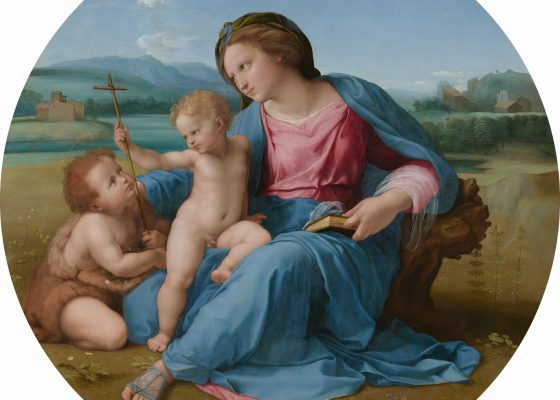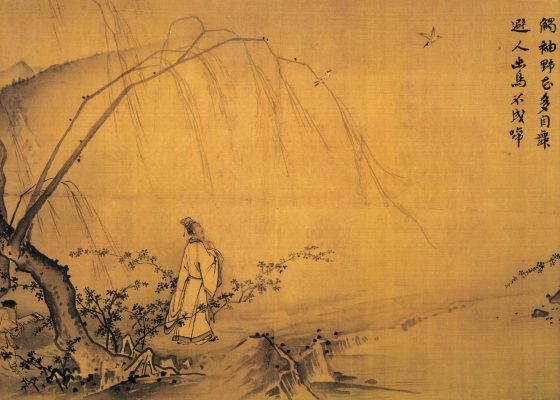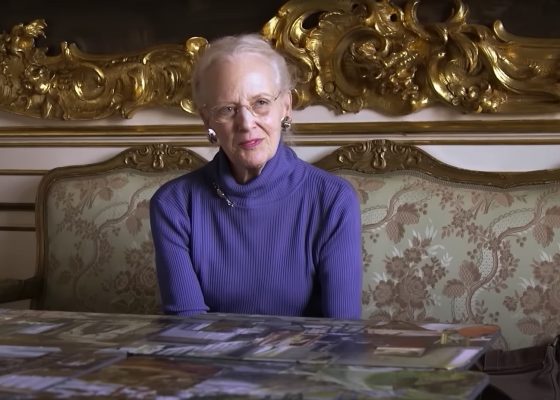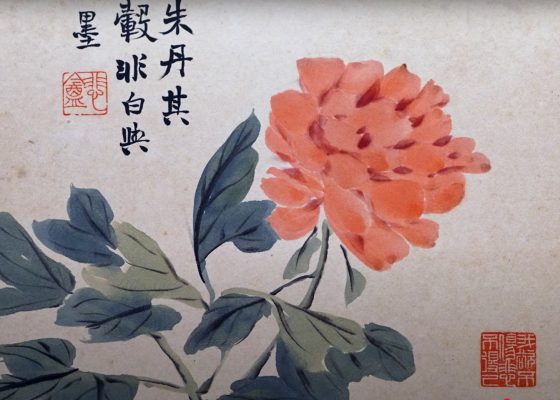By Reid Schram(Translation : Yuyu Chiang)
Now the brand begins to compete with the big jewelry salons of the era: Bapst, Sauvenat and Boucheron. All of them created pieces that were of very high quality, but none dared to create models inspired by the “historical” styles of previous eras.
After the fall of the Empire and the bitter days that followed, Paris again became the world capital of elegance. Rue de la Paix knew the splendors created by Worth, Guerlain, Vever and Meller, whose prestige attracted the European and American elite.
In 1873, Alfred Cartier becomes an associate at his father’s company, Francois. Times were changing, they were very restless and creative. Paris transformed ifself into “ville lumier ” and “Belle Epoque” began to be animated by the presence of elites in Europe who frequented fashionable bars and cabarets.
Among all those aristocrats and millionaires visiting the jewelry and fashion houses, the commercial talent of Francois Cartier has found those who will soon become his true buyers. Vanderbilt, Rockefeller, Morgan are the American tycoons were the ones who spent fortunes to be able to enter “high society”, already having real power in their hands.
“America, America – there we will succeed,” said Francois to his son and grandson, thinking at the profit he could make with a store in New York.
Also Read:
The Meaning of the Engagement Ring
Cartier Drive: A Shaped Watch Collection of an Elegant Pedigree
In 1894, Francois, the founder of Cartier, returns from Russia where he just ended a collaboration with Carl Faberge. His grandson Louis made his first steps as a brilliant and creative designer, being recognized for his talent and part of one of the fashion and jewelry designers that was dictating the trends worldwide.
Louis had frequent contradictions with fashion designers, as he didn’t like the disharmony between his jewelry and the dresses.
The idea of ” baguette” diamonds had just appeared is Louis’s innovations. He was an exceptional witness of that end of the century, while he began to create samples of his avant-garde talent. Many are unable to explain how he did not unite with the Art-Nouveau movement, which was very successful among the high society. Lalique, who worked for Cartier, was the king of fashion in the jewelry business, working with plant shapes and semiprecious stones.
But apparently Louis Cartier had the same idea as Oscar Wilde who said that too much modernism will make the fashion trends fade away much faster. And so it was. Lalique and its Art-Nouveau was an interesting phenomenon but a temporary one.
Cartier was predicting the future of jewelry for a new type of clientele: the bourgeoisie elite who was eager to stand out from the crowd. Tiffany also studied the trend, creating jewelry for the Castelane-Gould wedding. Also, several workshops were thinking to make some changes to the way they worked.
L. Cartier has decided to work with platinum, being the first who introduced this metal into the fashion world. The platinum mining industry grew by the day and this white malleable material, who did not oxidize at any temperature and was resistant to any acid, was the only one that allowed the creation of an infinite number of jewelry mountings.
On the platinum mountings, the queen of precious stones is the diamond, because the mechanism that holds the stone in place made the mount invisible. L. Cartier searches through the jewelry designs of the eighteenth century for the fantastic properties of platinum, going through libraries, big and small bookstores and studying day and night.
In the mean time, his father Alfred wanted to propose something important to him: the union Cartier – Worth, mediating Louis’s wedding with Jean-Philippe’s daughter, Andree Caroline.
The wedding celebration was posponed because for the moment, Louis was involved in much more important projects. He created something new: a line of watches that was based on the French watch design from the eighteenth century. With the manufacturing technique that was constanly evolving and a new clientele that was less refined, the nineteenth century watch making was more focused on the utility of the wath and not so much on its design.
For L. Cartier, the twenteenth century announced the need for review of the values that imposed a new design for the jewelery and watch industry. The Worth-Cartier alliance is created through the wedding of Louis and Andrée-Caroline.
Also Read:
Watches That Prove Less Can Actually Mean More
The Summit of Horology: watches worth millions
In 1898, the shops from Rue de la Paix number 13 are bought by Cartier and the clientele from Worth (fashion saloons) starts to visit Cartier jewelry stores. No. 13 becomes legendary as a lucky number for L. Catier. In the Cartier headquarters there were 13 workshop operators, 13 vendors and 13 helpers. The vendors had to be bilingual, to know all the subtleties of creating jewelry (the drawing process, different aspects of mineralogy), and besides all of these, to know the famous people who were visiting Paris. As something mandatory, their clothes had to present them as true gentleman.
L. Cartier opens a big department store in London in 1902, and lets his brother, Pierre Cartier, take care of the business. Pierre was 24 years old. A few years later he opened another store in New York that will be entrusted to the youngest of the brothers, Jacques Cartier.
One of the great talents L. Cartier had was to subtily predict the changes in trends and to meet the changing aesthetic tastes with his revolutionary and amazing creations.
After a short period of time, he divorces Andree-Caroline.
After World War I, in 1916, L. Cartier starts working with the Couet brothers to create the clock called “Mistery”, one of his greatest achievements. He also meets and start to colaborate with Jeanne Toussaint, a woman who has been called the Coco Chanel of jewelry and who served as style inspiration for some of Louis Cartier’s designs.
Louis Cartier will marry for the second time with the Hungarian countess, Almássy.
In 1925, Cartier uses platinum, diamond, crystal, onyx, imperial jade, rubies, coral and emerald in its jewelry that are literally “embroidered” in the flowers and fauna that was used excessively in “Art Nouveau”.
Following the years of crisis in America, when “Black Thursday” happened on Wall Street, L. Cartier was so caught up is his creations that he forgets about the world’s problems; but a serious heart attack forces him to give up everything.
From this moment (1933), Jeanne is in charge of the whole business. Platinum is no longer used because it was expensive and Cartier moves to gold mounts.
On July 24, 1944, a simple note appears in the newspaper ” Aujourd’ hui “: Louis Cartier died yesterday in New York after a long period of suffering.
The great genius of the twentieth century glamorized art had disappeared. The name Cartier is a myth today, a legend associated with very refined tastes. He was the jeweler of European royal houses and American multimillionaires.
Today Cartier is a multinational company that has thousands of employees all over the world, doing its best to keep the line of elegance, distinction and good taste that characterizes this house since 1847.
Louis Cartier’s great creations are now listed on international auction houses and sold like true works of art.
Also Read:
Priceless Writing Instruments: 100 Years Dedicated To Luxury Writing
Jaquet Droz: A Flow of Poetry











Cancel anytime


Using our website
You may use the The Middle Land website subject to the Terms and Conditions set out on this page. Visit this page regularly to check the latest Terms and Conditions. Access and use of this site constitutes your acceptance of the Terms and Conditions in-force at the time of use.
Intellectual property
Names, images and logos displayed on this site that identify The Middle Land are the intellectual property of New San Cai Inc. Copying any of this material is not permitted without prior written approval from the owner of the relevant intellectual property rights.
Requests for such approval should be directed to the competition committee.
Please provide details of your intended use of the relevant material and include your contact details including name, address, telephone number, fax number and email.
Linking policy
You do not have to ask permission to link directly to pages hosted on this website. However, we do not permit our pages to be loaded directly into frames on your website. Our pages must load into the user’s entire window.
The Middle Land is not responsible for the contents or reliability of any site to which it is hyperlinked and does not necessarily endorse the views expressed within them. Linking to or from this site should not be taken as endorsement of any kind. We cannot guarantee that these links will work all the time and have no control over the availability of the linked pages.
Submissions
All information, data, text, graphics or any other materials whatsoever uploaded or transmitted by you is your sole responsibility. This means that you are entirely responsible for all content you upload, post, email or otherwise transmit to the The Middle Land website.
Virus protection
We make every effort to check and test material at all stages of production. It is always recommended to run an anti-virus program on all material downloaded from the Internet. We cannot accept any responsibility for any loss, disruption or damage to your data or computer system, which may occur while using material derived from this website.
Disclaimer
The website is provided ‘as is’, without any representation or endorsement made, and without warranty of any kind whether express or implied.
Your use of any information or materials on this website is entirely at your own risk, for which we shall not be liable. It is your responsibility to ensure any products, services or information available through this website meet your specific requirements.
We do not warrant the operation of this site will be uninterrupted or error free, that defects will be corrected, or that this site or the server that makes it available are free of viruses or represent the full functionality, accuracy and reliability of the materials. In no event will we be liable for any loss or damage including, without limitation, loss of profits, indirect or consequential loss or damage, or any loss or damages whatsoever arising from the use, or loss of data, arising out of – or in connection with – the use of this website.
Last Updated: September 11, 2024
New San Cai Inc. (hereinafter “The Middle Land,” “we,” “us,” or “our”) owns and operates www.themiddleland.com, its affiliated websites and applications (our “Sites”), and provides related products, services, newsletters, and other offerings (together with the Sites, our “Services”) to art lovers and visitors around the world.
This Privacy Policy (the “Policy”) is intended to provide you with information on how we collect, use, and share your personal data. We process personal data from visitors of our Sites, users of our Services, readers or bloggers (collectively, “you” or “your”). Personal data is any information about you. This Policy also describes your choices regarding use, access, and correction of your personal information.
If after reading this Policy you have additional questions or would like further information, please email at middleland@protonmail.com.
PERSONAL DATA WE COLLECT AND HOW WE USE IT
We collect and process personal data only for lawful reasons, such as our legitimate business interests, your consent, or to fulfill our legal or contractual obligations.
Information You Provide to Us
Most of the information Join Talents collects is provided by you voluntarily while using our Services. We do not request highly sensitive data, such as health or medical information, racial or ethnic origin, political opinions, religious or philosophical beliefs, trade union membership, etc. and we ask that you refrain from sending us any such information.
Here are the types of personal data that you voluntarily provide to us:
As a registered users or customers, you may ask us to review or retrieve emails sent to your business. We will access these emails to provide these services for you.
We use the personal data you provide to us for the following business purposes:
Information Obtained from Third-Party Sources
We collect and publish biographical and other information about users, which we use to promote the articles and our bloggers who use our sites. If you provide personal information about others, or if others give us your information, we will only use that information for the specific reason for which it was provided.
Information We Collect by Automated Means
Log Files
The site uses your IP address to help diagnose server problems, and to administer our website. We use your IP addresses to analyze trends and gather broad demographic information for aggregate use.
Every time you access our Site, some data is temporarily stored and processed in a log file, such as your IP addresses, the browser types, the operating systems, the recalled page, or the date and time of the recall. This data is only evaluated for statistical purposes, such as to help us diagnose problems with our servers, to administer our sites, or to improve our Services.
Do Not Track
Your browser or device may include “Do Not Track” functionality. Our information collection and disclosure practices, and the choices that we provide to customers, will continue to operate as described in this Privacy Policy, whether or not a “Do Not Track” signal is received.
HOW WE SHARE YOUR INFORMATION
We may share your personal data with third parties only in the ways that are described in this Privacy Policy. We do not sell, rent, or lease your personal data to third parties, and We does not transfer your personal data to third parties for their direct marketing purposes.
We may share your personal data with third parties as follows:
There may be other instances where we share your personal data with third parties based on your consent.
HOW WE STORE AND SECURE YOUR INFORMATION
We retain your information for as long as your account is active or as needed to provide you Services. If you wish to cancel your account, please contact us middleland@protonmail.com. We will retain and use your personal data as necessary to comply with legal obligations, resolve disputes, and enforce our agreements.
All you and our data are stored in the server in the United States, we do not sales or transfer your personal data to the third party. All information you provide is stored on a secure server, and we generally accepted industry standards to protect the personal data we process both during transmission and once received.
YOUR RIGHTS/OPT OUT
You may correct, update, amend, delete/remove, or deactivate your account and personal data by making the change on your Blog on www.themiddleland.com or by emailing middleland@protonmail.com. We will respond to your request within a reasonable timeframe.
You may choose to stop receiving Join Talents newsletters or marketing emails at any time by following the unsubscribe instructions included in those communications, or you can email us at middleland@protonmail.com
LINKS TO OTHER WEBSITES
The Middle Land include links to other websites whose privacy practices may differ from that of ours. If you submit personal data to any of those sites, your information is governed by their privacy statements. We encourage you to carefully read the Privacy Policy of any website you visit.
NOTE TO PARENTS OR GUARDIANS
Our Services are not intended for use by children, and we do not knowingly or intentionally solicit data from or market to children under the age of 18. We reserve the right to delete the child’s information and the child’s registration on the Sites.
PRIVACY POLICY CHANGES
We may update this Privacy Policy to reflect changes to our personal data processing practices. If any material changes are made, we will notify you on the Sites prior to the change becoming effective. You are encouraged to periodically review this Policy.
HOW TO CONTACT US
If you have any questions about our Privacy Policy, please email middleland@protonmail.com
The Michelin brothers created the guide, which included information like maps, car mechanics listings, hotels and petrol stations across France to spur demand.
The guide began to award stars to fine dining restaurants in 1926.
At first, they offered just one star, the concept was expanded in 1931 to include one, two and three stars. One star establishments represent a “very good restaurant in its category”. Two honour “excellent cooking, worth a detour” and three reward “exceptional cuisine, worth a
Thank you for your participation,
please Log in or Sign up to Vote

123Sign in to your account